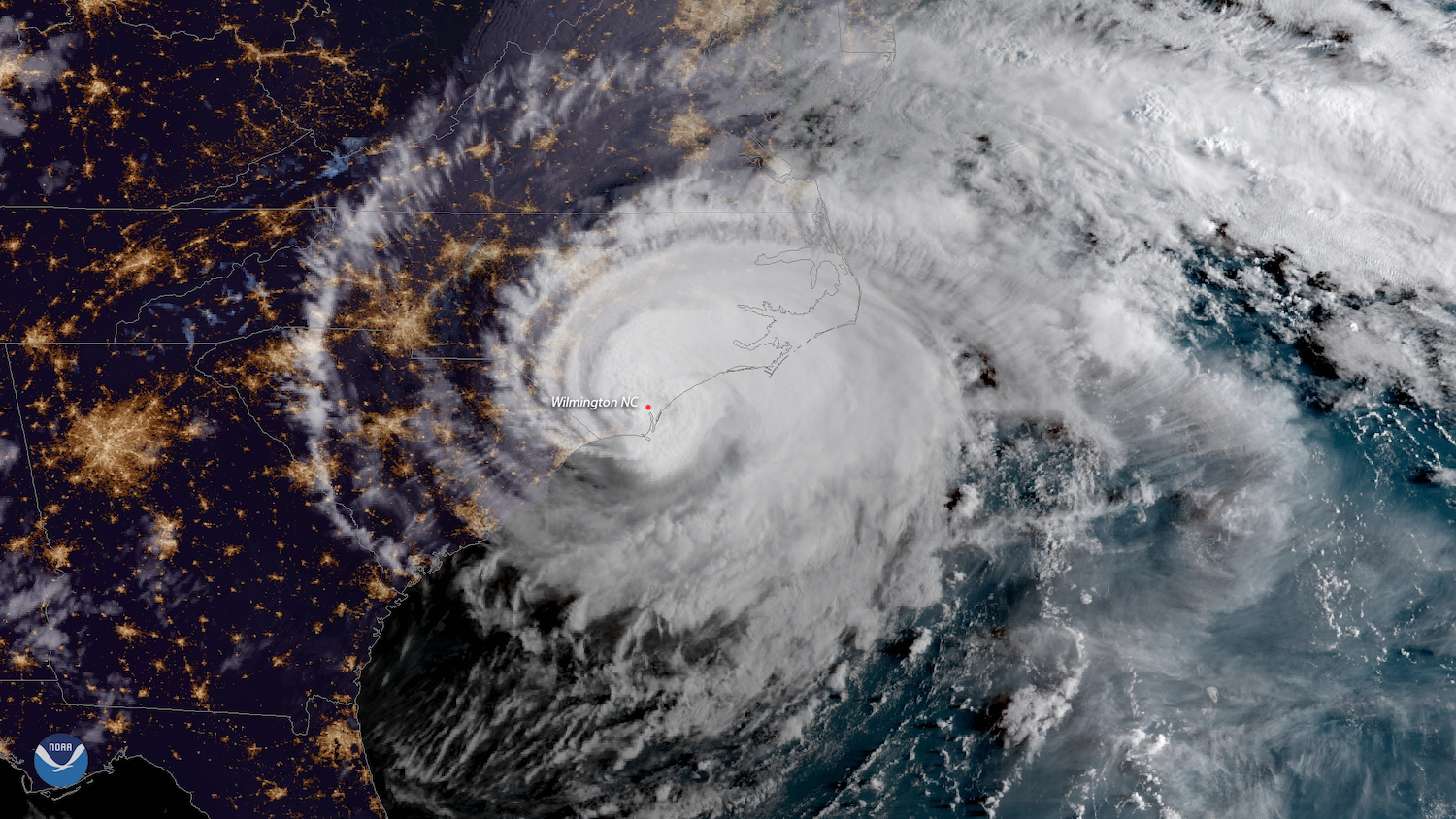Forests After Florence
Dr. Madhusudan Katti, an associate professor in the Department of Forestry and Environmental Resources, is collaborating with undergraduate students from across disciplines to study the hurricane’s collective impact on urban forests.

Story by Julie Johnson
It was 5 a.m. when the roof caved in on Kristina Bell’s family home. Torrential rain had pounded North Carolina’s coast for hours leading up to Hurricane Florence’s landfall as a Category 1 storm. In the early morning darkness, Bell’s parents bailed water as fast as they could, fighting against nature’s fury. More than a year later, Bell’s family is still recovering – living in a rental home while renovations are completed.
Bell is also one of 50 undergraduate students at NC State University working with Dr. Madhusudan Katti, an associate professor in the Department of Forestry and Environmental Resources, to study the hurricane’s collective impact on urban forests.
Assessing the Damage
As part of the study, Katti is working with Bell and other undergraduate students from across disciplines to assess to what extent disaster-impacted students become more resilient when they engage with issues relevant to their experiences.
“We wanted to meet learning goals while helping in recovery efforts and keeping students engaged through practical hands-on research — documenting the impact of the hurricane on urban forests and infrastructure,” Katti says. “To design the project, we asked: ‘What can we do to help students and help them help their communities?’”
To give the students agency in the project, Katti and his colleagues held a workshop to train them and ask for input about where the most significant impact on trees could be found. The students worked in teams of two and surveyed 560 sites across eastern North Carolina. They took pictures with 360-degree cameras and are now analyzing the images to answer their research questions:
- How has the habitat changed?
- How does the environment look different?
- How has the storm changed the kinds of wildlife present? The buildings?
- Has the canopy cover changed? If so, to what extent can you see sky when you look up as opposed to seeing trees?
Presenting the Findings
The students’ images capture a 360-degree view of each habitat, so the space looks like a sphere. Others can view it as if they’re walking among the trees.
Students will present the images alongside oral histories they’ve documented through more than 100 interviews with community members. This qualitative component of the research draws on the personal experiences of coastal residents.
The presentation will include a multimedia public exhibit on display at NC State’s campus libraries with online and portable versions available at a later date. Students sharing their findings hope to help their communities build resilience.
Building Resilient Communities
Katti says the impact of this work is broad. Students from many academic disciplines are learning how to study hurricanes while engaging their own communities. They’re getting residents involved, too, which makes it more meaningful.
The scientific impact involves creating a community record of what happened, which in turn helps spawn conversations about how residents felt impacted and how things recover or don’t. Katti believes long-term community engagement is possible, as is the potential for more citizen science projects to capture the impact over longer periods of time.
Bell appreciates the research project for more than just academics. She’s learned to listen to the ideas of others from different disciplines and felt the tug of environmental issues becoming even more personal. She’s excited to contribute to the multimedia exhibit so she can help others understand the impact of natural disasters.
Bell sums up her experience with this project to date, and in doing so, answers the question of whether it’s helping students recover: “My favorite part has been feeling connected to others with the same experience.”


